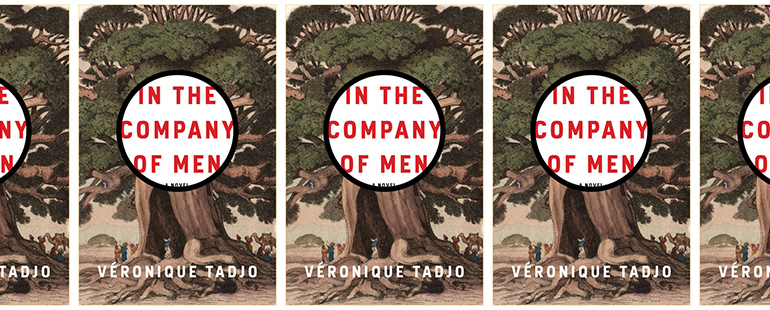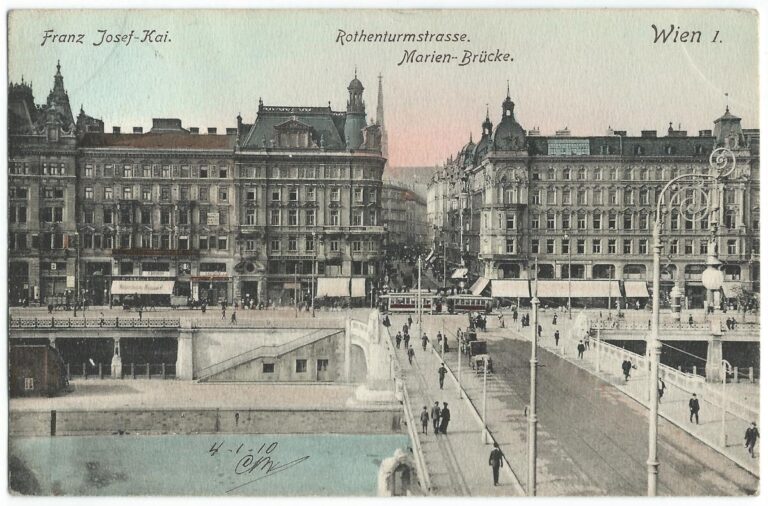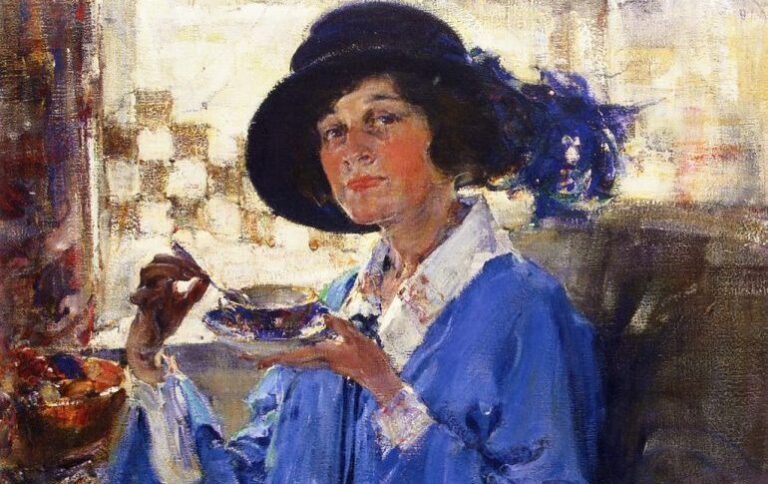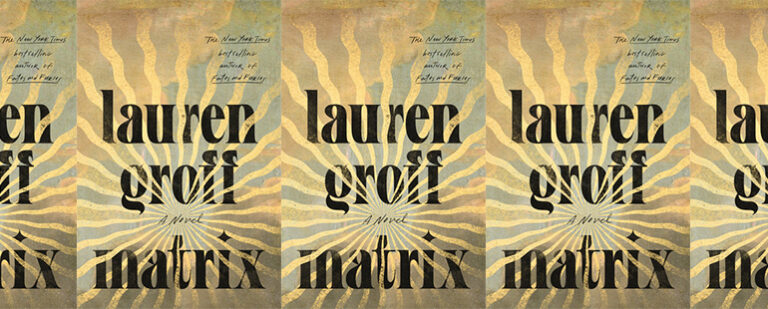In the Company of Men’s Long View of History

“What has been is what will be, and what has been done is what will be done; there is nothing new under the sun,” declares the narrator of Ecclesiastes. Despite their gloomy, fatalistic tone, these words can give comfort. To take the long view of history and understand that the crises we face today are varieties of what humans have seen before is to find company with our ancestors.
In Véronique Tadjo’s novel In the Company of Men, published in French in 2017 and available tomorrow in English, it is “Baobab, the first tree, the everlasting tree, the totem tree” that sees humanity according to the long view, through a perspective that includes both heaven and earth, past and present. “We, the trees,” begins Baobab:
Our roots run all the way down to the heart of the earth and we can feel the beat of her pulse. We inhale her breath. We taste her flesh. We live and die in the exact same spot, never moving from the land we occupy. Both prisoners and conquerors of time, we stand riveted to the ground yet soaring upward, reaching for the clouds. We adapt to all weathers, rain or shine, hurricanes or the dry harmattan winds. Our crowns merge with the sky’s cotton-wool dreams. We are the link between Man and his past, his present, and his unpredictable future.
Among the causes of the unpredictability of the human future, as we cannot possibly fail to see now, are virulent diseases. Tadjo’s novel spins the scientific, sociological, personal, and mythic into a polyvocal, visionary tale about the outbreak of Ebola virus disease that began in late December 2013 in Guinea. The disease spread to neighboring Liberia and Sierra Leone, and by the time the outbreak was over, in spring 2016, at least 28,646 people had been infected and 11,323 had died; both of these numbers are likely undercounted.
Is the Ebola virus something new under the sun? Likely not; it belongs to a family of viruses that dates back tens of millions of years. Its emergence as a cause of disease, however, appears to be recent. The virus was first identified in 1976, when two outbreaks of Ebola virus disease occurred in central Africa, in what are now South Sudan and the Democratic Republic of the Congo. These and subsequent outbreaks, says Baobab, are the result of a profound disruption in the relationship between humans and nature.
That relationship was once harmonious. In the old days, says Baobab, “the ancestors who founded the village would plant me right in the center of their lives.” The tree at the center of each village was both confidante and advisor, and a witness to celebrations, sorrow, and “the perpetual flow of death and rebirth, death and rebirth.” The presence of the tree as a central member of a community also symbolized the link between the people of the village and nature as a whole.
“Everything is different today,” says Baobab, describing the new attitude of humans toward nature. Where before there was harmony there is now extraction, exploitation, and waste. Baobab tells of the devastation caused by a gold rush that overtook its village: “To excavate large basins in which to sift through the pebbles, they set to work cutting down every single tree in sight. Now there was mud everywhere, nothing but mud; and in their minds, madness . . . . The mercury discharged into the rivers to make gold particles easier to spot killed the fish, the small shellfish, the plankton and dark-green algae. So the water became acid. Toxic.” Soon afterward, the villagers-become-miners fell ill, and Baobab’s village disappeared.
The connection between environmental destruction and Ebola virus disease is direct: deforestation destroys the habitat of fruit bats, who then “migrate to the villages, where there are mango, guava, papaya, and avocado trees, with their soft, sweet fruits. The bats seek the company of Men.” Too, they carry Ebola virus and pass it on to other animals, including humans. Nevertheless, says the Bat, to whom Tadjo also gives voice, “I’m not to blame for this tragedy. It has happened entirely against my will. I wish no one harm . . . . I harbor but one regret: having let Ebola escape from my belly.”
The question of responsibility—who or what is to blame?—as well as questions about good and evil, life and death, and human purpose run through the novel in an argument that includes many voices. In addition to Baobab and the Bat, we hear from the Ebola virus itself, as well as a doctor, a nurse, a burier of bodies, a dying mother, an orphaned girl, a prefect in charge of outreach, a Western volunteer, the adoptive mother of a traumatized orphan, a grieving fiancé, and the researcher who discovered the virus.
From each of these people we hear variations on themes of home, hope, and loss. The doctor, for example, dreams of home: “My thoughts are with my children and what we’ll do when we’re together again. I’m going to buy them bicycles, one red, one blue. I’m going to teach them bicycle racing . . . . I miss their mother. To me, she’s the most beautiful woman in the world.” The burier of bodies, on the other hand, maintains his focus on the job; “You had best not think about your home, about your normal life,” he says. Existential questions arise. “What are we doing here on earth?” asks the doctor; “Our lives are frittered away with trivialities,” says the nurse. What’s the point in doing anything but lying down to die alongside those who are already ill? people tell the outreach teams the prefect sends out to the country. The burier of bodies doesn’t know if there is a point, but does what he can anyway: “Many people say that Ebola is going to kill us all. But be that as it may, I’d rather join the fight than stay in my corner doing nothing.” Meanwhile, the woman who takes in an orphaned seven-year-old boy—“They’ve lost the kingdom of their childhood,” she says of such children—takes it as a given “that we had to keep trying to do our part.”
As it once did when it grew at the center of a thriving village, Baobab listens to these voices. “I have lost my illusions,” Baobab says, and yet Baobab’s outlook is neither fatalistic nor gloomy, like that of the narrator of Ecclesiastes. It is rather the words of the virus that resemble Ecclesiastes: “Everything rots. Everything disintegrates. Everything merges with the ground.” Whereas it sees itself as “neither good nor bad,” the virus sees humans as irredeemable: “They have no lessons to teach to anyone. They should instead take a hard look at the evil they have inflicted and continue to inflict on themselves, deliberately, ever since they first walked the earth.” But even the Ebola virus must admit defeat in the face of the power of ordinary people who “put their immediate interests and personal troubles aside in order to think, work, and fight collectively.” It is for these people and for the dispossessed that Baobab loves humanity, even now. And it is because of this love that Baobab hopes for renewal.
Ebola virus remains a threat. Another outbreak was declared in Guinea on February 14, when seven cases including three deaths were confirmed. Meanwhile, we are in a race between vaccination and the evolution of SARS-CoV-2. The cost in suffering of our failure to understand our interdependence is—as it has always been—everywhere visible. As the Bat says, and as Baobab agrees, “Humans need to recognize that they’re part of the world, that there’s a close bond between them and all other living creatures, great and small.”


